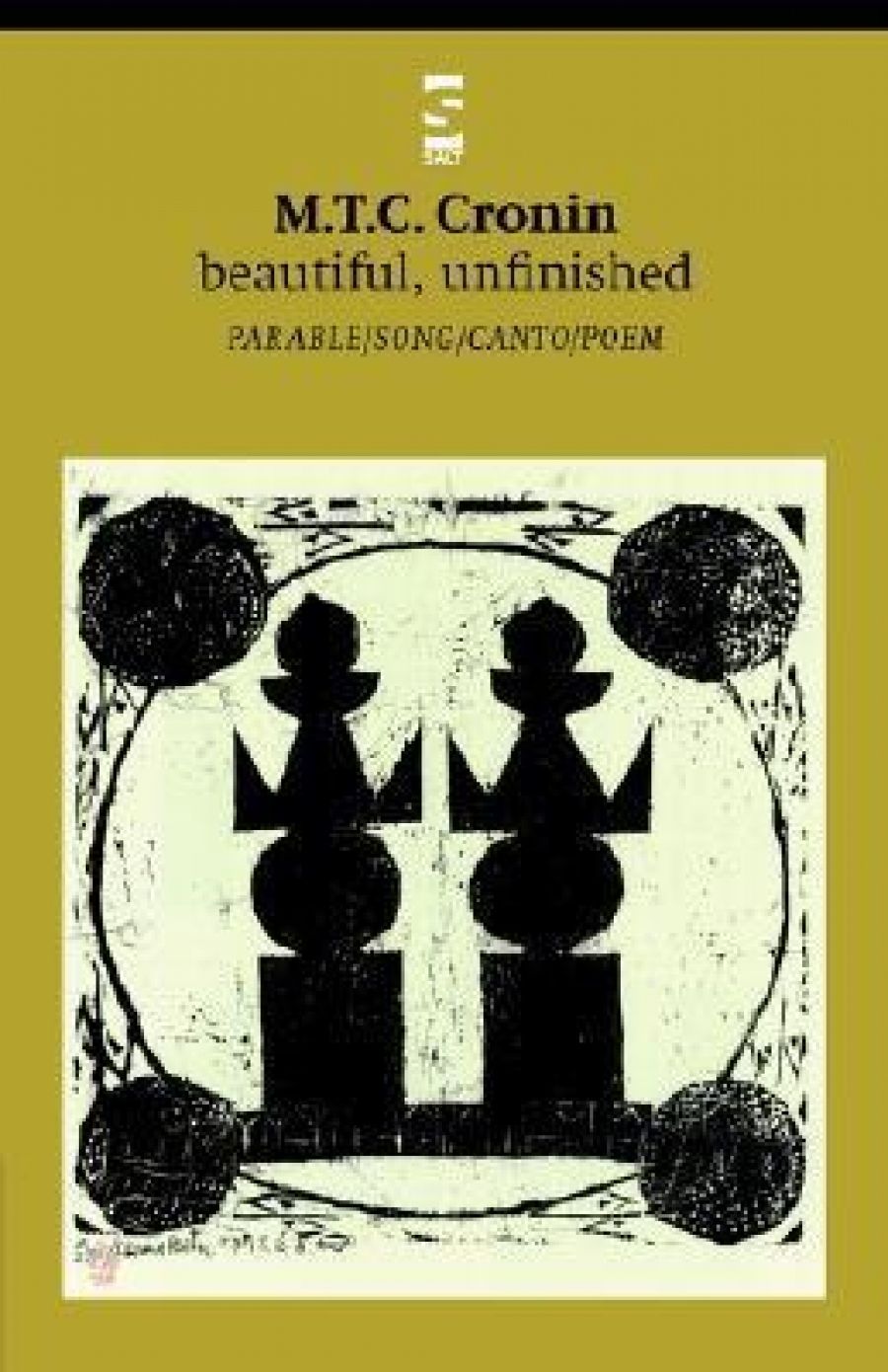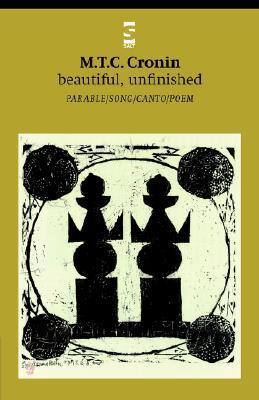
- Free Article: No
- Contents Category: Poems
- Review Article: Yes
- Article Title: A Frail Banner
- Online Only: No
- Custom Highlight Text:
Like M.T.C. Cronin’s earlier collections, beautiful, unfinished is characterised by a mixture of mystical awe and formal restraint. The collection is subtitled PARABLE/SONG/CANTO/POEM’. As this suggests, it consists of a parable of sorts in verse, a sequence of songs, a set of cantos ‘minus melody’, and some poems. But in Cronin’s hands, these various forms seem based upon haiku. She writes sparely in short-lined stanzas, and she undercuts her own rhythms until it seems as if almost every poem might end in an ellipsis.
- Book 1 Title: beautiful, unfinished
- Book 1 Biblio: Salt, $21.95 pb, 116 pp
- Book 1 Cover Small (400 x 600):

- Book 1 Cover (800 x 1200):

The parable that opens beautiful, unfinished is called ‘A Parable on the Erotic Struggle with True Muteness (How We Speak)’. It is a long sequence of short poems, abrupt with nervous rapture and written with such jerky lyricism that the white space around them seems like the condition of ‘True Muteness’. For Cronin’s work is remarkable for what you might call its self-consistency and for the way its language, imagery and verse technique are unusual in similar ways. Her parable, for instance, doesn’t tell a story, but remains a parable in that it creates an imaginative world that also serves as a philosophy, a world of journeys, oceans, trees, skies, mountaintops and riddles. This is something that Cronin, with her particularly formal kind of self-consciousness, sets out for us in her first poem:
There is not one thing I will say
outside of parable
For in the mind is another mind
one as far back
as you have not yet reached
It chuckles like the one who
invented laughter
In this way, Cronin brings her philosophy to the surface. Occasionally, this philosophy seems facile: ‘There is no need to explain / our friendship // Life is about its preciousness /each person’; ‘Offer something! / This is as far as you go.’ More often, she achieves something startling:
but this discontent, my stillness
blesses me
for the body is never to be believed
as if it were a theory
in poems there is nothing you can touch
think about a flock of birds
the humanity of trapped water
it all occurs where you memorize
the movement of life
better to consider everything and give it its due
for we have evolved
to watch each other carefully —
It is the surprising precision of her imagery – as in ‘the humanity of trapped water’, for instance – that saves her from easy abstraction.
This precision is surprising because Cronin moves from statement to image and from image to image as if they all existed together in some dimensionless condition, a world where ‘there is nothing you can touch’. That sense of nothingness gives these poems an air of impossibility; their endings are more like renunciations than conclusions. But they make those renunciations with images and observations so deft they work like wit. ‘The breath is like a little tug / at death’; ‘Come possum / with your hearty feet leaving prints / on the porcelain roofs of dreams’; ‘to a church? / No the church is full of glassblowers / this pain is not fragile enough / for their pursed lips to blow’ – these are all examples of Cronin’s ability to be fantastical with such directness.
Her fantastical wit is particularly effective when the tone is conversational:
I honestly don’t want
to muck around with the weather.
It seems to have
such a nice indifference.
Like the storm that just came in
and destroyed all our hopes
after such a beautiful Summer.
Remember our sincerity.
Here, ‘the weather’ gets drawn into the lovers’ story after all, as if there is no way to escape from ourselves into the indifferent world. So in the end, ‘sincerity’ seems such a frail banner to wave.
My favourite, though, is Cronin’s poem for dragonflies:
Dragonfly again!
Somehow I believe they have castles
invisible for their life
of a single day
The palace of twenty-four hours
Day and night
a feast day at both ends!
The poem itself is like a castle in the air, delicate and fantastical – almost always but never quite overwhelmed by nothingness. As such, it serves as a kind of emblem for this collection.


Comments powered by CComment